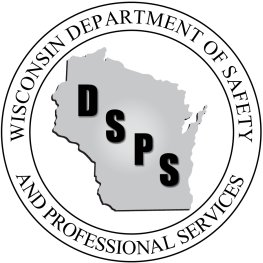DSPS Secretary Dawn Crim Assembles Mass Timber Task Force, Looks to Distinguish the Wisconsin Commercial Building Code
The task force will meet virtually and is expected to generate a set of mass timber guidelines by year end.
In her ongoing effort to expand the use of mass timber—a family of manufactured wood products that can be used structurally or aesthetically in commercial buildings—Department of Safety and Professional Services Secretary Dawn Crim assembled a task force to inform the Commercial Building Code Council’s current code update work. Current CBCC Chair Richard Paur, a retired Milwaukee building inspection supervisor and faculty member at Milwaukee Area Technical College, will also chair the task force.
The task force will develop a set of mass timber guidelines that will expand the allowable use of mass timber in commercial buildings in Wisconsin. Those guidelines are expected to draw on the expertise and studies used to secure approval for Ascent, a 25-story mass timber Milwaukee apartment building that, when completed, will be the tallest mass timber tower in the world.
The Ascent design and engineering team pursued and secured variances from Wisconsin code requirements. Several individuals who worked on Ascent—either as a representative of the owner, as regulators, or as scientists/researchers—will also serve on the task force. The full roster includes the following:
Richard Paur, Chair
DSPS Commercial Building Code Council
Justin Gavin
Bureau Chief, Integrated Services Section
Department of Safety and Professional Services
Laura Hasburgh
Materials Research Engineer
USDA Forest Product Laboratory
Michael Mazmanian
Operations Director, Department of Neighborhood Services
City of Milwaukee
John Peronto
Senior Principal
Thornton Tomasetti
Erich Roden
Deputy Chief
Milwaukee Fire Department
Alexander Timmer
Assistant Professor
School of Architecture & Urban Planning
University of Wisconsin – Milwaukee
“We remain committed to modernizing our commercial building code to reflect current science and allow emerging materials and practices that promote sustainability while maintaining safety during construction and in our built environment,” Secretary Crim said. “We have an opportunity to leverage the work that has already been done in Milwaukee to demonstrate the safety of mass timber, and, in the spirit of efficiency and progress, we want to capture that as we update our commercial building code.”
Secretary Crim noted that the task force’s work may generate other benefits for the state. “We also have a forest products industry in Wisconsin that could see increased demand from expanded use of wood in commercial buildings,” she said.
Mass timber is an alternative to traditional concrete and steel construction, and it has some unique sustainability features that make it an attractive option for many building designers, owners, and occupants. More specifically, mass timber products can capture greenhouse gases rather than emit them, which minimizes the carbon footprint of buildings that use it in place of concrete and steel. Buildings, through construction and energy use in operation, are among the largest contributors to global greenhouse gases, according to the United States Environmental Protection Agency.
When exposed, mass timber products also lend a natural aesthetic to building interiors and exteriors.
Previously, Secretary Crim has hosted a mass timber round table conversation in Milwaukee. Attendees also had the opportunity to tour Ascent while still under construction. She says that the work and excitement about Ascent have galvanized interest in mass timber and reveal an existing infrastructure for it already in place. She points to research coming out of the University of Wisconsin–Milwaukee School of Architecture and Urban Design as well as the USDA Forest Products Laboratory, which has facilities on the University of Wisconsin–Madison campus, that is proving the safety of various mass timber products.
“We have Ascent generating excitement, we have UW–M and the Forest Products Lab generating the science, and we have a forest products industry that potentially could produce some of these products,” Secretary Crim said. “This is the perfect time and place to be doing this work, and we are happy to be a part of such a potentially transformative effort.”
The task force will meet virtually and is expected to generate a set of mass timber guidelines by year end.
The Department of Safety and Professional Services issues more than 240 unique licenses, administers dozens of boards and councils that regulate professions, enforces state building codes, runs the state fire prevention program, and maintains the award-winning Wisconsin Enhanced Prescription Drug Monitoring Program, which is a key tool in the multi-faceted public health campaign to stem excessive opioid prescribing. A fee-based agency, the Department of Safety and Professional Services is self-sustaining and receives no general fund tax dollars for its day-to-day operations. With five offices and 250 employees throughout Wisconsin, DSPS collaborates with constituents and stakeholders across a wide range of industries to promote safety and advance the economy.
NOTE: This press release was submitted to Urban Milwaukee and was not written by an Urban Milwaukee writer. While it is believed to be reliable, Urban Milwaukee does not guarantee its accuracy or completeness.
Mentioned in This Press Release
Recent Press Releases by Wisconsin Department of Safety and Professional Services
Wisconsin DSPS Recognized for Innovation
Nov 26th, 2025 by Wisconsin Department of Safety and Professional ServicesAgency's digital license offering earns prestigious award
Wisconsin DSPS Digital License Earns Another Award
Oct 21st, 2025 by Wisconsin Department of Safety and Professional ServicesAgency leaders to be honored for their latest innovation next month





















